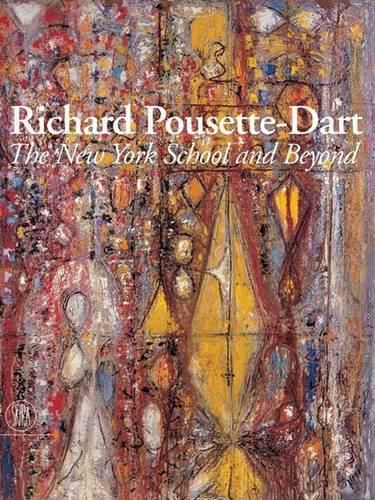Readings Newsletter
Become a Readings Member to make your shopping experience even easier.
Sign in or sign up for free!
You’re not far away from qualifying for FREE standard shipping within Australia
You’ve qualified for FREE standard shipping within Australia
The cart is loading…






This groundbreaking volume on Richard Pousette-Dart is the first complete publication to be published since the artist’s death and traces the artist’s entire creative output from the 1930s to 1992. The American artist Richard Pousette-Dart (1916-1992), one of the founding members of the New York School, generally known as the Abstract Expressionist movement, with whom he appeared in the famous photo of The Irascibles in Life magazine in 1951, created paintings, drawings and sculptures for over fifty years. Pousette-Dart was born to an American artist family and gained broad public attention during the 1940s along with such heroes of Abstract Expressionism as Mark Rothko, Jackson Pollock, and Barnett Newman. As the youngest member of the first generation of American Abstract Expressionists, Pousette-Dart shared with artists of his milieu such interests as psychology, myth-making, comparative anthropology, and African and American tribal art. Yet Pousette-Dart’s oeuvre is distinctive. While many of the Abstract Expressionists moved steadily in the direction of formal simplification, Pousette-Dart insisted on increasing complexity of visual discourse in his works. The richness of his painting surfaces and ambiguity of his forms are connected to his explorations of American Transcendentalism and Far Eastern philosophy, interests little shared by the other Abstract Expressionists. More importantly, these aspects express his belief that art is a process of increasing elaboration and subtlety of both thought and feeling. The essays focus on varying themes and periods including Pousette-Dart’s early years, his connection to the intellectual and stylistic inventions of Abstract Expressionism; the interaction in Richard Pousette-Dart’s paintings of spiritual values with the varied and complex visual language of high modernist abstraction; the question of the artist’s working method, following the evolution of his composition and paint-handling over the decades; and extracts from his notebook pages, the rudiments of his underlying philosophy and the all-encompassing vision that informs his paintings. His writings make clear that he was indifferent to the formalist criteria of his day and that from the mid 1930s on his art and his thinking followed a consistent line of development independent of contemporary trends.
$9.00 standard shipping within Australia
FREE standard shipping within Australia for orders over $100.00
Express & International shipping calculated at checkout
This groundbreaking volume on Richard Pousette-Dart is the first complete publication to be published since the artist’s death and traces the artist’s entire creative output from the 1930s to 1992. The American artist Richard Pousette-Dart (1916-1992), one of the founding members of the New York School, generally known as the Abstract Expressionist movement, with whom he appeared in the famous photo of The Irascibles in Life magazine in 1951, created paintings, drawings and sculptures for over fifty years. Pousette-Dart was born to an American artist family and gained broad public attention during the 1940s along with such heroes of Abstract Expressionism as Mark Rothko, Jackson Pollock, and Barnett Newman. As the youngest member of the first generation of American Abstract Expressionists, Pousette-Dart shared with artists of his milieu such interests as psychology, myth-making, comparative anthropology, and African and American tribal art. Yet Pousette-Dart’s oeuvre is distinctive. While many of the Abstract Expressionists moved steadily in the direction of formal simplification, Pousette-Dart insisted on increasing complexity of visual discourse in his works. The richness of his painting surfaces and ambiguity of his forms are connected to his explorations of American Transcendentalism and Far Eastern philosophy, interests little shared by the other Abstract Expressionists. More importantly, these aspects express his belief that art is a process of increasing elaboration and subtlety of both thought and feeling. The essays focus on varying themes and periods including Pousette-Dart’s early years, his connection to the intellectual and stylistic inventions of Abstract Expressionism; the interaction in Richard Pousette-Dart’s paintings of spiritual values with the varied and complex visual language of high modernist abstraction; the question of the artist’s working method, following the evolution of his composition and paint-handling over the decades; and extracts from his notebook pages, the rudiments of his underlying philosophy and the all-encompassing vision that informs his paintings. His writings make clear that he was indifferent to the formalist criteria of his day and that from the mid 1930s on his art and his thinking followed a consistent line of development independent of contemporary trends.